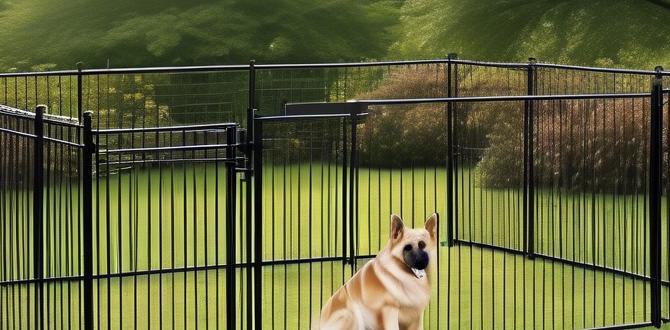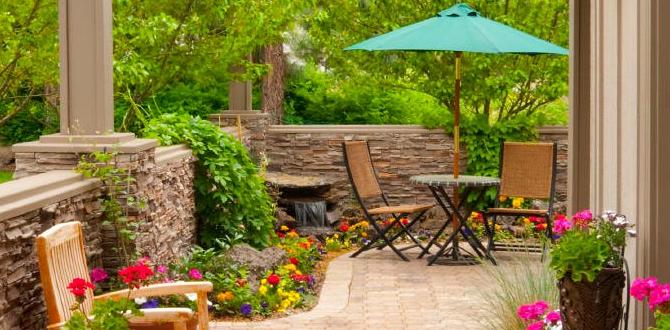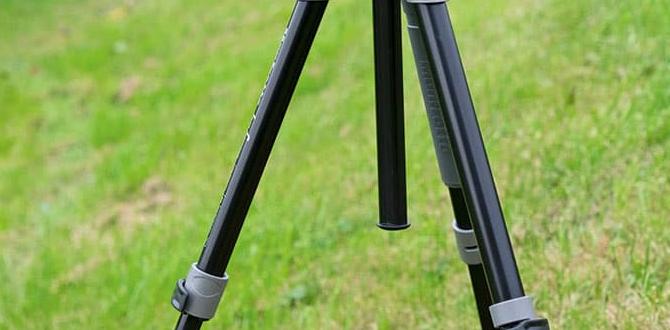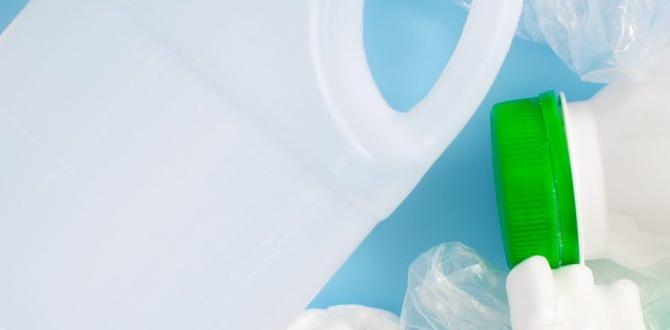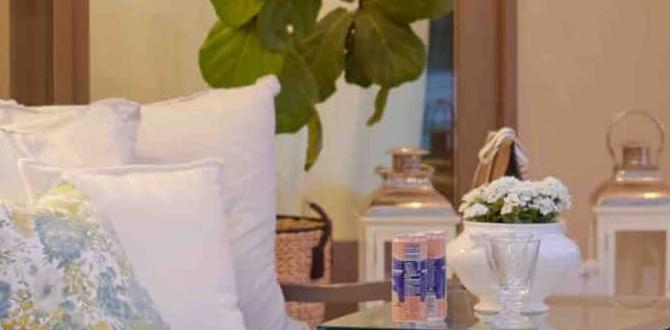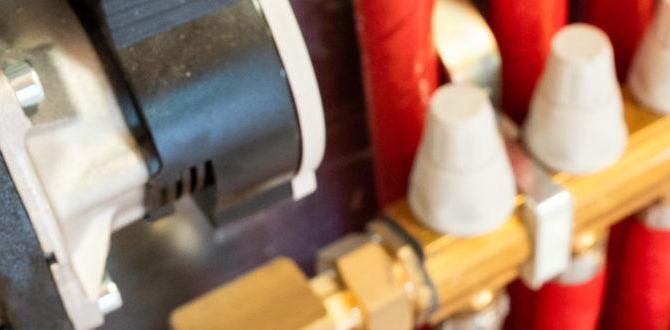Have you ever thought about using plastic containers for gardening? Many gardeners are discovering their benefits. These containers are lightweight and can be found everywhere. But did you know they can be perfect for growing your favorite plants? Imagine a world where you can grow herbs on your kitchen windowsill or flowers on your balcony.
Plastic containers are not just for storing items. They can become beautiful little gardens. Each container offers a chance to create your own green space. You can paint them, stack them, or even reuse old ones. The possibilities are endless!
Gardening with plastic containers is fun, simple, and rewarding. You can use any size and shape you like. Have you ever seen a huge tomato growing in a small pot? It’s both surprising and exciting! So, why not dive into planting with plastic containers? Let’s explore how to make your gardening dreams come true.
Plastic Containers For Gardening: Versatile Solutions And Tips
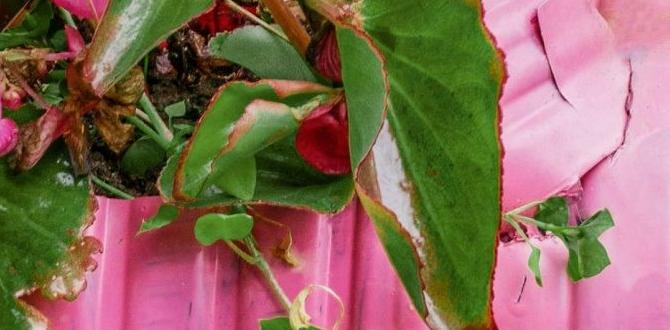
Plastic Containers for Gardening
Plastic containers are perfect for showcasing your green thumb. They’re lightweight and easy to move around. Imagine creating a mini garden on your porch! These containers come in many sizes and shapes. You can grow everything, from flowers to vegetables. Did you know they help retain moisture too? This means less frequent watering! Plus, recycling old containers saves money and the environment. Start your gardening journey now with durable plastic pots, and watch your plants thrive!Benefits of Using Plastic Containers for Gardening
Lightweight and easy to move. Costeffective and durable.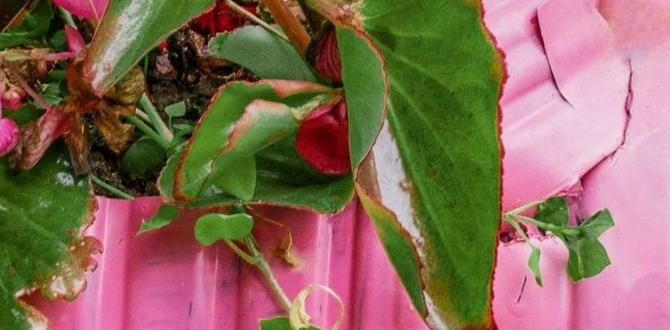
Using plastic containers for gardening has many perks. They are lightweight, making it easy to move your plants around. Need to change their spot for more sunlight? No problem! These containers are also cost-effective. You can buy them without breaking the bank. Plus, they are durable and can last for years. This means you get great value for your money!
Why are plastic containers popular for gardening?
Many gardeners choose plastic containers because of their weight and cost. They are easy to lift and handle. You can easily carry them to a new spot, even if filled with soil. They are also affordable and last a long time.
Key Benefits Include:
- Lightweight for easy movement
- Durable and long-lasting
- Cost-effective for every gardener
Types of Plastic Containers for Gardening
Different shapes and sizes available. Specialty containers for specific plants.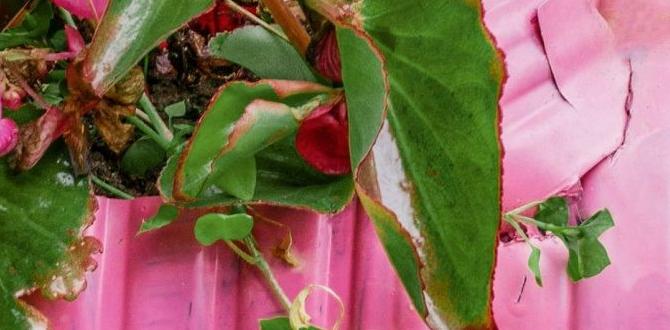
Gardening can be a fun adventure, especially when you pick the right plastic containers! They come in all shapes—like round, square, and even oval. Sizes vary too, from tiny pots for baby plants to giant tubs for tomatoes that could win a beauty contest. Fancy a plant that prefers a special home? Specialty containers exist for that, like hanging baskets for trailing vines or deep pots for rooty veggies. Get ready to plant and let your garden dreams grow!
| Container Shape | Ideal For |
|---|---|
| Round | Herbs, flowers |
| Square | Vegetables |
| Hanging Baskets | Vines, trailing plants |
| Deep Pots | Root vegetables, tomatoes |
Choosing the Right Plastic Container
Factors to consider: size, drainage, and material quality. How to match containers with plant needs.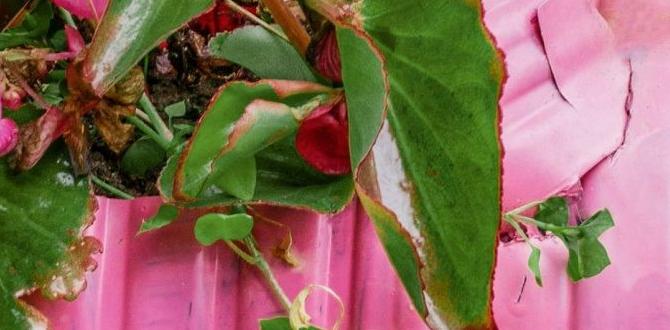
Choosing the perfect plastic container can make your plants happy. Start with size. A small plant needs a small pot, and a big plant wants space. Think about drainage too. Holes at the bottom let water escape. Imagine a plant getting soggy shoes! Next, check the material quality. Strong containers can last seasons. Match your containers to plant needs, like color and shape. Some plants like cozy spots, while others are solar superheroes. Happy planting!
| Factor | Considerations |
|---|---|
| Size | Choose based on plant size. |
| Drainage | Ensure small holes for excess water. |
| Material Quality | Pick strong, durable plastic. |
Best Practices for Planting in Plastic Containers
Soil selection and preparation. Proper watering techniques.
Choosing the right soil is key for plants in plastic containers. Use lightweight potting mix that drains well, so your plants don’t swim during rainstorms. Food for plants? They like their meals served fresh! Make sure to mix in some compost for extra nutrients.
Next, think about watering. Plants in containers need more water than those in the ground. It’s like they’re always thirsty! Check the soil often – if it feels dry, give it a good drink. Just don’t drown them! A fun trick? Use your finger to test the soil. If you can’t feel moisture, it’s time to water.
| Soil Tips | Watering Tips |
|---|---|
| Use potting mix. | Check soil weekly. |
| Add compost for nutrients. | Water if dry to the touch. |
| Ensure good drainage. | Avoid overwatering! |
These practices keep your potted plants happy and healthy. Happy planting!
Maintaining Plastic Containers
Cleaning and disinfecting containers. Seasonal care tips to prolong container life.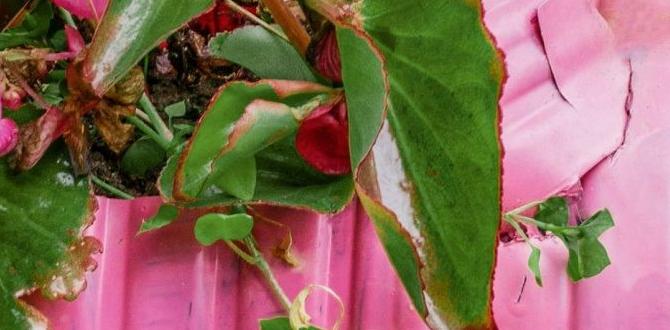
Keeping your plastic containers fresh for gardening is easy and fun! Start by giving them a good wash with soap and water. This helps remove dirt and any sneaky pests hiding inside. Don’t forget to disinfect! A mix of water and bleach does the trick. Rinse well to avoid any “hangover” effects on your plants.
For seasonal care, store containers upside down in winter to prevent water from freezing inside. Use bright paint or decorations to cheer them up when spring rolls around. Remember, a happy container means happy plants. It’s like giving your garden a spa day!
| Care Tips | Action |
|---|---|
| Cleaning | Wash with soap and water |
| Disinfecting | Use bleach and water mix |
| Seasonal Storage | Store upside down in winter |
| Decoration | Brighten them up for spring |
Recycling and Sustainability of Plastic Containers
Ecofriendly options for disposal and recycling. How to repurpose plastic containers in gardening.
Giving new life to plastic containers can be both fun and eco-friendly! When we recycle them, we help our planet. Instead of tossing them away, consider using them in your garden. You can create unique planters or seed starters with those colorful containers. Imagine a garden filled with happy plants growing in cheerful plastic pots—they’re like little superheroes for your yard! Did you know that about 30% of plastic is recycled each year? Let’s boost that number!
| Container Type | Repurposing Idea |
|---|---|
| Milk Jugs | Use them as mini greenhouses! |
| Ice Cream Tubs | Perfect for herb gardens. |
| Peanut Butter Jars | Great for storage of seeds. |
By turning waste into resources, we can enjoy a green thumb and help the Earth. Remember, every little plant counts in the fight against plastic waste!
Common Mistakes to Avoid with Plastic Containers
Overwatering or underwatering plants. Neglecting drainage considerations.
Many gardeners make mistakes with plastic containers. Overwatering and underwatering are common issues. Plants can rot if soaked too much. On the other hand, they may dry out if not enough water is given. It’s like a dance; find the right rhythm!
Another mistake is not considering drainage. Plants need holes at the bottom to let water escape. Without drainage, water collects, which is harmful. Remember this mantra: “Water is good, but too much is bad.”
What is the impact of poor watering habits?
Poor watering habits can stress plants. They may wilt or grow too slowly. Healthy plants need a balanced amount of moisture to thrive.
Things to remember:
- Water consistently.
- Check drainage holes.
- Adjust based on the season.
Conclusion
In summary, plastic containers are great for gardening. They are lightweight, easy to move, and come in many sizes. You can grow flowers, vegetables, and herbs in them. Remember to choose containers with drainage holes. Next time you garden, try using plastic containers for fun and success! For more tips, check out gardening websites or books. Happy gardening!FAQs
Sure! Here Are Five Related Questions On The Topic Of Plastic Containers For Gardening:Sure! Here are five related questions on the topic of plastic containers for gardening: 1. **What are plastic containers used for in gardening?** Plastic containers hold soil and plants. We use them to grow flowers, vegetables, or herbs. They help keep plants healthy. 2. **Can I use any plastic container for plants?** Not really. Some plastic containers are safe for plants, while others are not. Look for ones that are labeled for gardening. 3. **How do I choose the right size container?** It depends on the plant. Bigger plants need larger containers. Small plants can go in tiny pots. 4. **Should I drill holes in plastic containers?** Yes! Holes help water drain out. This prevents the roots from sitting in water, which is important for healthy plants. 5. **Can I reuse plastic containers?** Yes! You can clean and reuse old plastic containers. Just make sure they are safe for plants before using them again.
Sure! Please ask your question, and I’ll give you a simple answer.
What Are The Advantages And Disadvantages Of Using Plastic Containers For Gardening Compared To Traditional Materials Like Clay Or Wood?Plastic containers are light and easy to move. They hold water well, which can help your plants stay hydrated. However, they can get too hot in the sun and might not last as long as clay or wood. Clay and wood look nice and can keep plants cooler, but they are heavier and may crack over time. So, each type has its good and bad points!
How Can I Ensure That My Plastic Containers Are Safe For Growing Edible Plants?To make sure your plastic containers are safe for growing edible plants, look for containers marked as “food safe.” These usually have recycling numbers 1, 2, 4, or 5 on the bottom. You should also avoid containers that once held chemicals. Clean the containers well with soap and water before using them. Lastly, check if they have a strong smell; if they do, don’t use them.
What Types Of Plastic Are Best Suited For Gardening Containers, And How Can I Identify Them?The best types of plastic for gardening containers are HDPE and PVC. HDPE stands for High-Density Polyethylene, and it is strong and safe for plants. PVC means Polyvinyl Chloride, which is also good but should be used carefully. You can find these plastics by looking at the recycling number on the bottom of containers. If it shows a 1 (for PET) or a 2 (for HDPE), it’s safe for gardening!
How Do I Properly Care For And Maintain Plastic Gardening Containers To Extend Their Lifespan?To take care of plastic gardening containers, start by cleaning them regularly. You can wash them with soap and water to remove dirt. Make sure to store them in a cool, shaded place to prevent fading from the sun. Avoid using them for heavy plants to prevent cracking. Lastly, check for any cracks or holes and fix them quickly before they get worse.
Can I Recycle Old Plastic Containers For Gardening Purposes, And If So, What Are Some Creative Ways To Repurpose Them?Yes, you can recycle old plastic containers for gardening! You can use them to grow plants. For example, cut a big container in half to make two planters. You can also use small containers to start seeds. Just remember to poke some holes in the bottom for water to drain!
{“@context”:”https://schema.org”,”@type”: “FAQPage”,”mainEntity”:[{“@type”: “Question”,”name”: “Sure! Here Are Five Related Questions On The Topic Of Plastic Containers For Gardening:”,”acceptedAnswer”: {“@type”: “Answer”,”text”: “Sure! Here are five related questions on the topic of plastic containers for gardening: 1. **What are plastic containers used for in gardening?** Plastic containers hold soil and plants. We use them to grow flowers, vegetables, or herbs. They help keep plants healthy. 2. **Can I use any plastic container for plants?** Not really. Some plastic containers are safe for plants, while others are not. Look for ones that are labeled for gardening. 3. **How do I choose the right size container?** It depends on the plant. Bigger plants need larger containers. Small plants can go in tiny pots. 4. **Should I drill holes in plastic containers?** Yes! Holes help water drain out. This prevents the roots from sitting in water, which is important for healthy plants. 5. **Can I reuse plastic containers?** Yes! You can clean and reuse old plastic containers. Just make sure they are safe for plants before using them again.”}},{“@type”: “Question”,”name”: “”,”acceptedAnswer”: {“@type”: “Answer”,”text”: “Sure! Please ask your question, and I’ll give you a simple answer.”}},{“@type”: “Question”,”name”: “What Are The Advantages And Disadvantages Of Using Plastic Containers For Gardening Compared To Traditional Materials Like Clay Or Wood?”,”acceptedAnswer”: {“@type”: “Answer”,”text”: “Plastic containers are light and easy to move. They hold water well, which can help your plants stay hydrated. However, they can get too hot in the sun and might not last as long as clay or wood. Clay and wood look nice and can keep plants cooler, but they are heavier and may crack over time. So, each type has its good and bad points!”}},{“@type”: “Question”,”name”: “How Can I Ensure That My Plastic Containers Are Safe For Growing Edible Plants?”,”acceptedAnswer”: {“@type”: “Answer”,”text”: “To make sure your plastic containers are safe for growing edible plants, look for containers marked as food safe. These usually have recycling numbers 1, 2, 4, or 5 on the bottom. You should also avoid containers that once held chemicals. Clean the containers well with soap and water before using them. Lastly, check if they have a strong smell; if they do, don’t use them.”}},{“@type”: “Question”,”name”: “What Types Of Plastic Are Best Suited For Gardening Containers, And How Can I Identify Them?”,”acceptedAnswer”: {“@type”: “Answer”,”text”: “The best types of plastic for gardening containers are HDPE and PVC. HDPE stands for High-Density Polyethylene, and it is strong and safe for plants. PVC means Polyvinyl Chloride, which is also good but should be used carefully. You can find these plastics by looking at the recycling number on the bottom of containers. If it shows a 1 (for PET) or a 2 (for HDPE), it’s safe for gardening!”}},{“@type”: “Question”,”name”: “How Do I Properly Care For And Maintain Plastic Gardening Containers To Extend Their Lifespan?”,”acceptedAnswer”: {“@type”: “Answer”,”text”: “To take care of plastic gardening containers, start by cleaning them regularly. You can wash them with soap and water to remove dirt. Make sure to store them in a cool, shaded place to prevent fading from the sun. Avoid using them for heavy plants to prevent cracking. Lastly, check for any cracks or holes and fix them quickly before they get worse.”}},{“@type”: “Question”,”name”: “Can I Recycle Old Plastic Containers For Gardening Purposes, And If So, What Are Some Creative Ways To Repurpose Them?”,”acceptedAnswer”: {“@type”: “Answer”,”text”: “Yes, you can recycle old plastic containers for gardening! You can use them to grow plants. For example, cut a big container in half to make two planters. You can also use small containers to start seeds. Just remember to poke some holes in the bottom for water to drain!”}}]}
